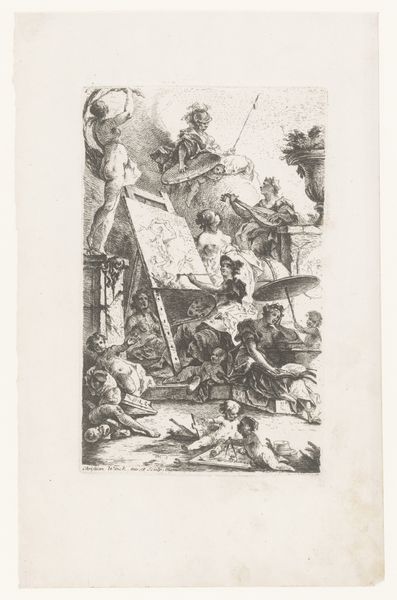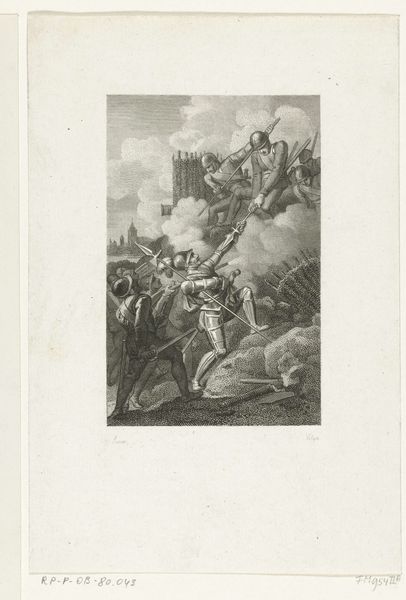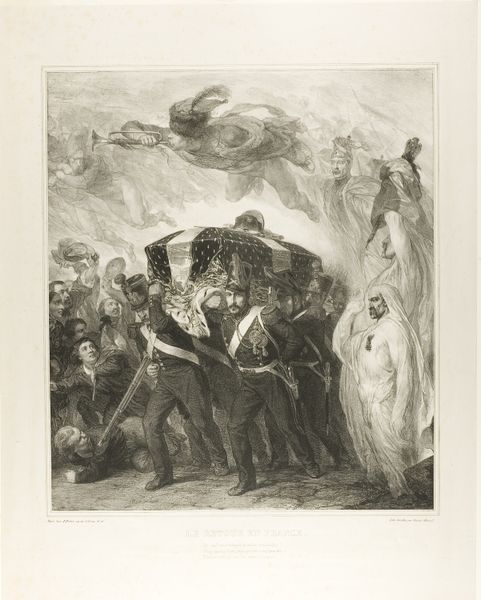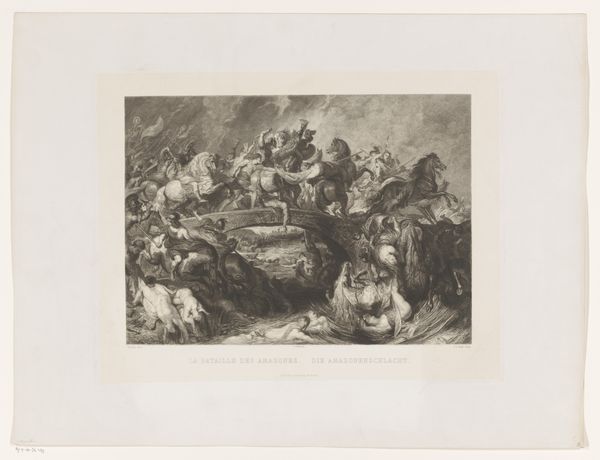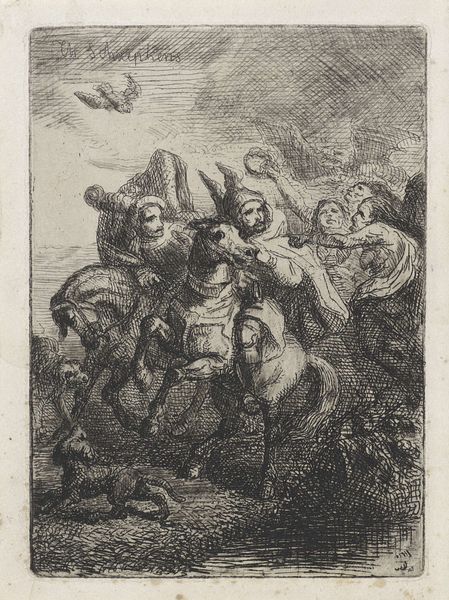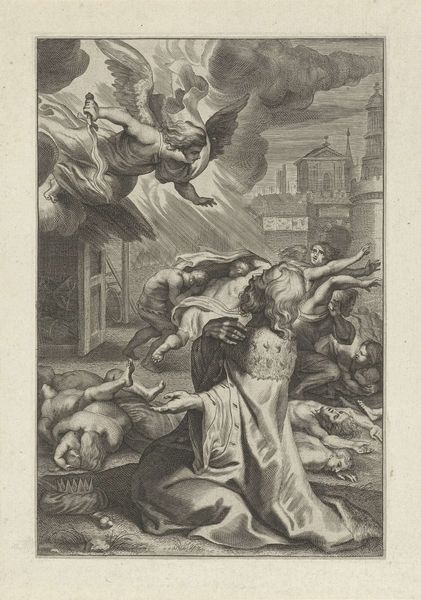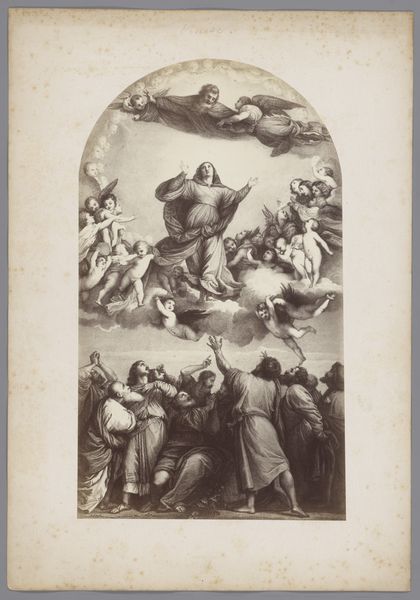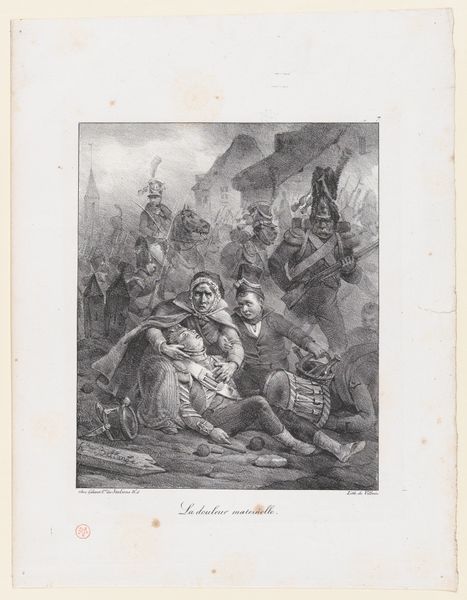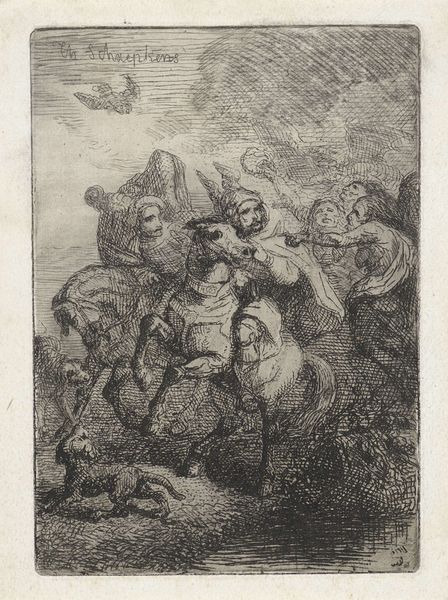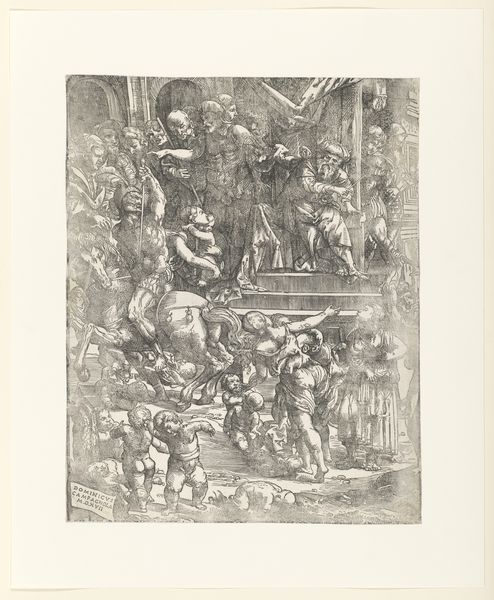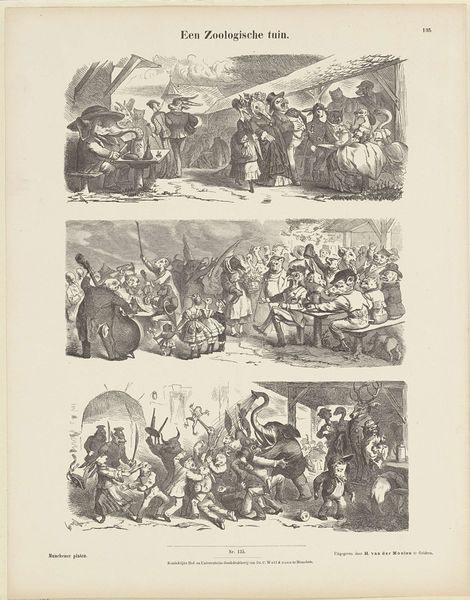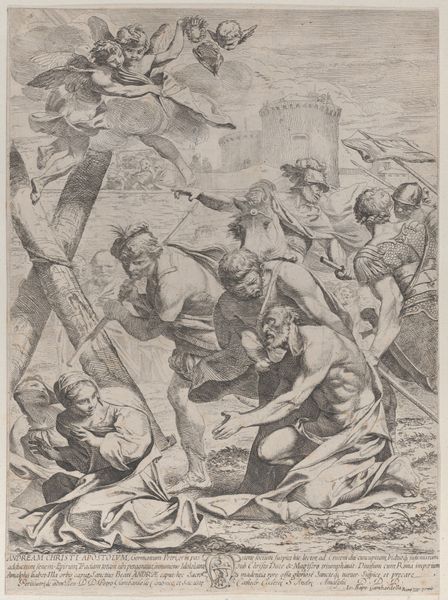
engraving
#
aged paper
#
allegory
#
narrative-art
#
baroque
#
old engraving style
#
figuration
#
personal sketchbook
#
history-painting
#
engraving
Dimensions: height 231 mm, width 178 mm
Copyright: Rijks Museum: Open Domain
Editor: So, this is "The Flood of Deucalion," an engraving by Bernard Picart from 1731, currently at the Rijksmuseum. It's overwhelmingly chaotic. Figures are struggling against rising waters while divine beings look on from above. How do you interpret this work? Curator: It's compelling, isn't it? Picart offers us a window into the early 18th-century’s fascination with classical narratives and its simultaneous grappling with themes of divine justice and human suffering. Consider the Enlightenment's emerging critiques of power – doesn’t the passivity of those “divine beings” trouble you? Aren’t they also a commentary on the detachment of ruling elites from the plight of the masses? Editor: That’s a really interesting point about the elite being detached, I hadn’t considered that. But what about the choice to depict this particular myth? Curator: The myth of Deucalion speaks to cyclical destruction and rebirth. But whose stories are being centered here? It's worth asking if the engraving unintentionally echoes colonial narratives of wiping clean and rebuilding anew, erasing indigenous histories under the guise of progress. Are there parallels, do you think, between this story of divine punishment and contemporary anxieties around climate catastrophe and displacement? Editor: I can see that connection to modern climate issues, certainly. Is Picart making any statements by choosing this specific moment? Curator: Absolutely. Think about the power dynamics: Who controls the flood? Who survives? The engraving isn't just about a historical event; it’s a commentary on power, resilience, and the stories we choose to tell ourselves about who deserves to endure. Perhaps he is offering a vision of resistance. Editor: This has definitely given me a new perspective on the artwork. Thanks for pointing out the socio-political contexts. Curator: My pleasure. Seeing art through an activist lens illuminates the stories behind the story, allowing us to critically engage with the past and connect it to our present.
Comments
No comments
Be the first to comment and join the conversation on the ultimate creative platform.

